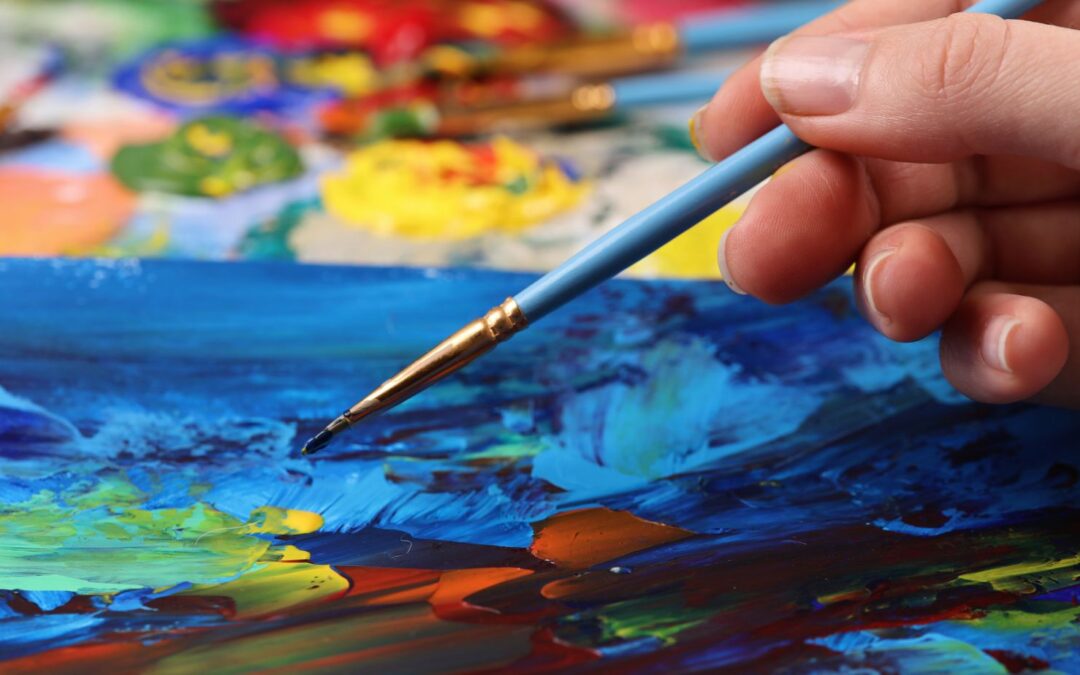Art therapy, a form of expressive therapy that uses the creative process of making art to improve physical, mental, and emotional well-being, has gained significant recognition in recent years. This therapeutic approach offers a unique and powerful way for individuals to express themselves, process emotions, and foster personal growth. While its applications are diverse, art therapy has shown particular promise in aiding addiction recovery. Let’s delve into the numerous benefits of art therapy and explore how it can be a transformative tool for healing and self-discovery.
One of the primary advantages of art therapy is its ability to facilitate non-verbal communication. Many individuals struggle to articulate their thoughts and feelings verbally, especially when dealing with complex emotions or traumatic experiences. Art provides an alternative language, allowing people to express what words cannot. Through painting, drawing, sculpting, or other artistic mediums, individuals can externalize their inner world, making it tangible and easier to process. This aspect of art therapy is particularly beneficial for those in addiction recovery, as it helps them explore and communicate the underlying issues that may have contributed to their substance abuse.
Art therapy also serves as a powerful stress-reduction tool. The act of creating art can be meditative and calming, promoting relaxation and mindfulness. As individuals focus on their artwork, they often enter a state of flow, which can temporarily alleviate anxiety and negative thoughts. This stress-relief aspect is crucial for individuals in recovery, as stress is a common trigger for relapse. By providing a healthy coping mechanism, art therapy equips individuals with a valuable tool to manage cravings and navigate challenging emotions without turning to substances.
Another significant benefit of art therapy is its ability to boost self-esteem and self-awareness. The creative process allows individuals to discover hidden talents and develop new skills, fostering a sense of accomplishment and pride. As people in recovery create art, they may begin to see themselves in a new light, recognizing their capabilities and potential beyond their addiction. This shift in self-perception can be incredibly empowering, reinforcing their commitment to recovery and helping them build a positive self-image.
Art therapy also provides a safe space for emotional exploration and release. Many individuals turn to substances as a way to numb or escape difficult emotions. Through art, people can confront and process these emotions in a controlled and supportive environment. The artwork itself can serve as a container for intense feelings, allowing individuals to externalize and examine their emotions from a distance. This process can lead to greater emotional regulation and resilience, essential skills for maintaining long-term sobriety.
The metaphorical nature of art offers another unique benefit. Often, the images and symbols that emerge in artwork can provide insights into unconscious thoughts and feelings. For those in addiction recovery, this can help uncover underlying patterns, traumas, or unresolved issues that may be fueling their substance use. By bringing these elements to light, individuals and their therapists can address root causes more effectively, leading to more comprehensive healing.
Art therapy also fosters social connection and support. Group art therapy sessions provide opportunities for individuals to share their experiences, offer mutual support, and learn from one another. This sense of community is invaluable in addiction recovery, as it combats feelings of isolation and helps individuals build a supportive network. Collaborative art projects can further enhance these connections, promoting teamwork and shared experiences of creativity and healing.
The versatility of art therapy is another of its strengths. It can be adapted to various settings and populations, making it accessible to people of all ages, backgrounds, and abilities. Whether in individual therapy sessions, group workshops, or as part of a comprehensive treatment program, art therapy can be tailored to meet specific needs and goals. This flexibility allows for its integration into diverse recovery programs, complementing other therapeutic approaches and enhancing overall treatment efficacy.
Moreover, art therapy can help individuals develop healthier coping mechanisms and life skills. The creative process encourages problem-solving, decision-making, and planning – all valuable skills that can translate to other areas of life. As individuals in recovery learn to approach their artwork with patience, perseverance, and openness to experimentation, they cultivate qualities that support their ongoing recovery journey.
The benefits of art therapy extend beyond the therapy session itself. Many individuals find that continuing to create art outside of formal therapy becomes a meaningful part of their recovery maintenance. It provides a constructive outlet for self-expression, a way to track personal growth, and a reminder of their progress and resilience.
In conclusion, art therapy offers a rich tapestry of benefits that can significantly enhance the recovery process for individuals struggling with addiction. From providing a non-verbal means of communication and stress relief to fostering self-esteem and emotional processing, art therapy addresses many of the core challenges faced in recovery. Its ability to uncover unconscious material, promote social connection, and develop life skills makes it a valuable component of comprehensive addiction treatment.
As we continue to recognize the complex nature of addiction and the need for holistic approaches to recovery, art therapy stands out as a powerful and transformative tool. By harnessing the healing potential of creativity, art therapy opens new pathways to recovery, self-discovery, and lasting change. Whether used as a primary treatment modality or as a complementary approach, art therapy has the potential to color the journey of recovery with hope, insight, and renewed purpose.



